Nobody wants a bed bug infestation. However, if you spy a small bug crawling around your bed or in your home, the thought of bed bugs can spark a feeling of panic. But, before you toss out your mattress, it’s important to know that there are several other bugs that look like bed bugs, and are commonly mistaken for them. Learn more about these pests below.
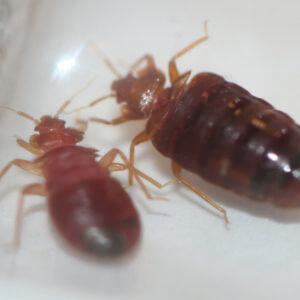
First things first: what do bed bugs look like?
Bed bugs are small, reddish-brown insects roughly the size of an apple seed, about 1/8th of an inch. They are notoriously good at hiding which makes them even more difficult to identify. Most people know bed bugs by their unfortunate tendency to bite people in their sleep. Before you panic, if you stumble on a tiny insect that may be a bed bug, consider if it’s another pest altogether. A professional pest control company is your best bet for quickly identifying what kind of infestation you’re dealing with, but there are some steps you can take to try to identify bed bugs and their dopplegangers.
Dr. David Moore, Dodson Bros Pest Control’s on-staff entomologist, explains some insects that might be mistaken for bed bugs. Some other insects in the region behave similarly to bed bugs, and here’s how to identify bed bugs or other similar insects.
Bat Bugs
Color: Where bed bugs are a mahogany color, bat bugs are beige to light brown.
Shape: Both bed bugs and bat bugs are oval shaped.
Size: Bat bugs are about ¼ inch long, the same size as bed bugs.
Region: Bat bugs tend to be found in the Midwestern United States, but bed bugs are found worldwide.
Bat bugs are bloodsucking insects that have a similar appearance to bed bugs. However, where bed bugs will feed on humans, bat bugs feed primarily on the blood of bats. The two bugs look very similar in appearance. The best way to tell the two apart is to look at the length of the hair on their bodies, but this requires a microscope. Most bed bugs are found within a few feet of their feeding host, which includes mattresses, headboards, baseboards and nightstands. Bat bugs are often found in locations where bats have formed colonies, such as attics and chimneys.
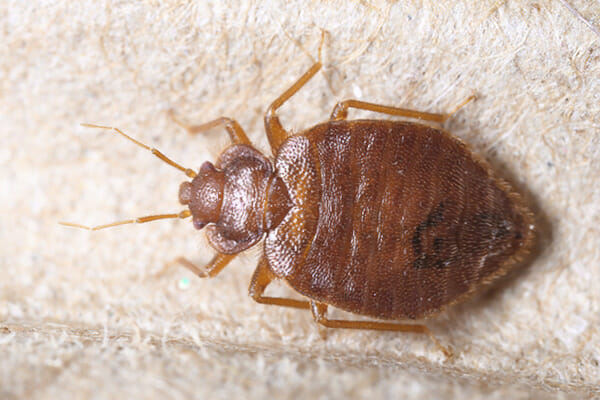
Spider Beetles
Color: Spider beetles may range from pale brownish yellow to reddish brown to almost black.
Shape: Both bed bugs and spider beetles are oval shaped.
Size: Spider beetles are about 1/32 to 3/16 inch long.
Region: Spider beetles are most commonly found in the Northern region of the United States.
Unlike bed bugs, spider beetles do not typically bite humans. In fact, they prefer to feed on grains. Like bed bugs, spider beetles are nocturnal and will hide in cracks and crevices. Spider beetles have a humpbacked appearance, which is different from the smooth, apple seed like appearance of bed bugs.
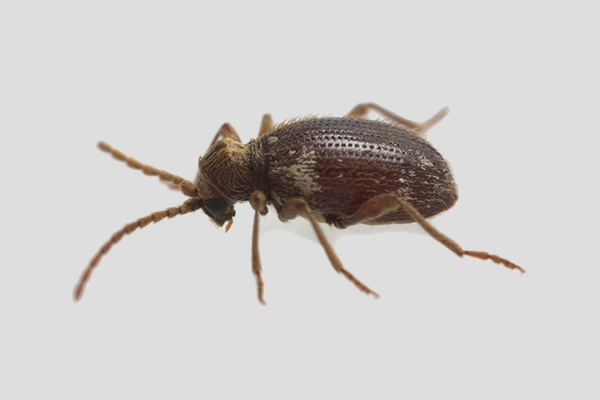
Booklice
Color: Booklice are a pale brown or creamy color.
Shape: Where bed bugs are oval shaped, booklice have segmented bodies, meaning their head and body are separated.
Size: Booklice can be between 1/32 to ¼ inch long.
Region: Booklice and bed bugs are both found throughout the world.
Unlike bed bugs, booklice feed exclusively on fungi or mold. They are fond of grain products. If you find booklice in stored food, it is an indication of high humidity, which encourages mold growth. Booklice do not bite, transmit diseases or damage food or furniture. However, they can be annoying to homeowners in large numbers.
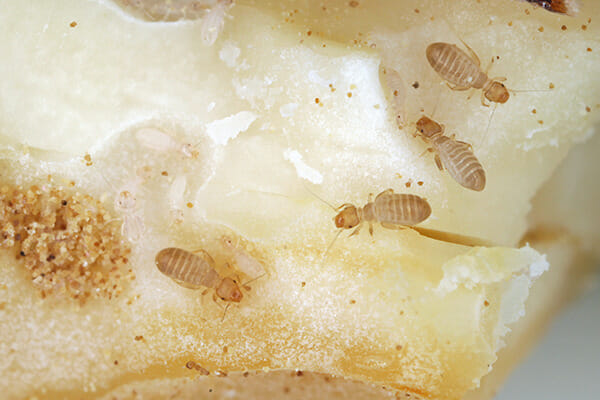
Carpet Beetles
Color: Where bed bugs are solid mahogany, carpet beetles are black with a white pattern and orange or red scales.
Shape: Both bed bugs and carpet beetles are oval shaped.
Size: Carpet beetles vary in size from 1/16 inch to ⅛ inch.
Region: Carpet beetles and bed bugs are both found throughout the world.
Carpet beetles are common in houses, and their damage is commonly mistaken for clothes moths. Carpet beetles feed on items made of wool, fur, felt, silk, feathers, skins and leather. They do not suck blood. Carpet beetles can also thrive on lint, hair and debris accumulating under baseboards and inside floor vents and ducts, similar to bed bugs.

Fleas
Color: Fleas are a reddish brown color.
Shape: Fleas have long legs and round heads, unlike bed bugs.
Size: Fleas are approximately ⅛ inch long.
Region: Fleas are more commonly found in the United States than in other parts of the world.
Like bed bugs, fleas also bite humans (and pets) and feed on their blood. However, bed bugs prefer human blood and fleas prefer animal blood. Fleas tend to bite humans on the lower body, and their bites itch almost immediately. Fleas are able to jump, while bed bugs are not.

Cockroach Nymphs
Color: Varies by species, but usually are dark brown
Shape: Cockroaches have long bodies and unlike fleas, have prominent antennae.
Size: Varies by species, but baby cockroaches are usually between ⅛ and ¼ of an inch.
When cockroaches first hatch, they can resemble bed bugs. However, adult cockroaches are significantly bigger than adult bed bugs. The only time you are likely to confuse these two is when cockroaches are very young, and even then, with close inspection, there are notable differences. Roaches also rarely bite, unlike bed bugs.

Head Lice
Color: Light brown or tan
Shape: Lice are usually oval-shaped with a tapered rear end
Size: Lice are very small, usually 1/16 inch
Head lice are parasites, just like bed bugs, and they have some similarities in appearance. Lice are usually described as looking like sesame seeds. Lice can usually be found on the head of humans or in animal fur and aren’t usually easily spotted by the naked eye due to their unusual habits.
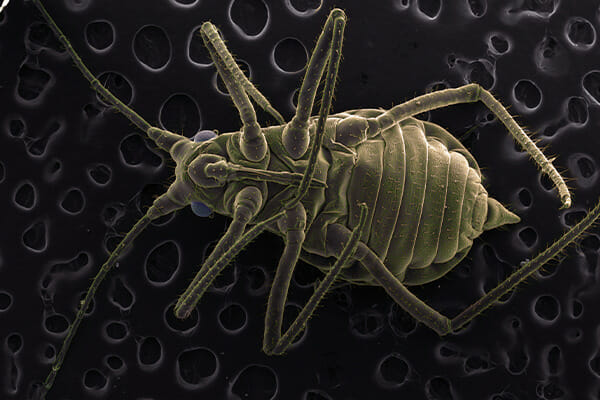
Other Ways to Identify Bed Bugs
Bed bugs can be identified by sight or by evaluating their behavior. Bed bugs emerge at night in search of a food source. These parasitic insects feast on blood, either from humans or animals. Bed bug bites tend to be itchy and may seemingly appear out of nowhere. Bed bugs will also leave behind smears of blood after meals and fecal matter. To learn more about signs of bed bugs, check out our blog post.
Whether you have bed bugs or a pest you believe to be bed bugs, call a professional. If you have bed bugs, do-it-yourself treatments will not work. If you do not have bed bugs, identification of the pest you have is crucial. Otherwise, you risk wasting time and money on extermination methods that do not work. Contact us today for your free inspection!
